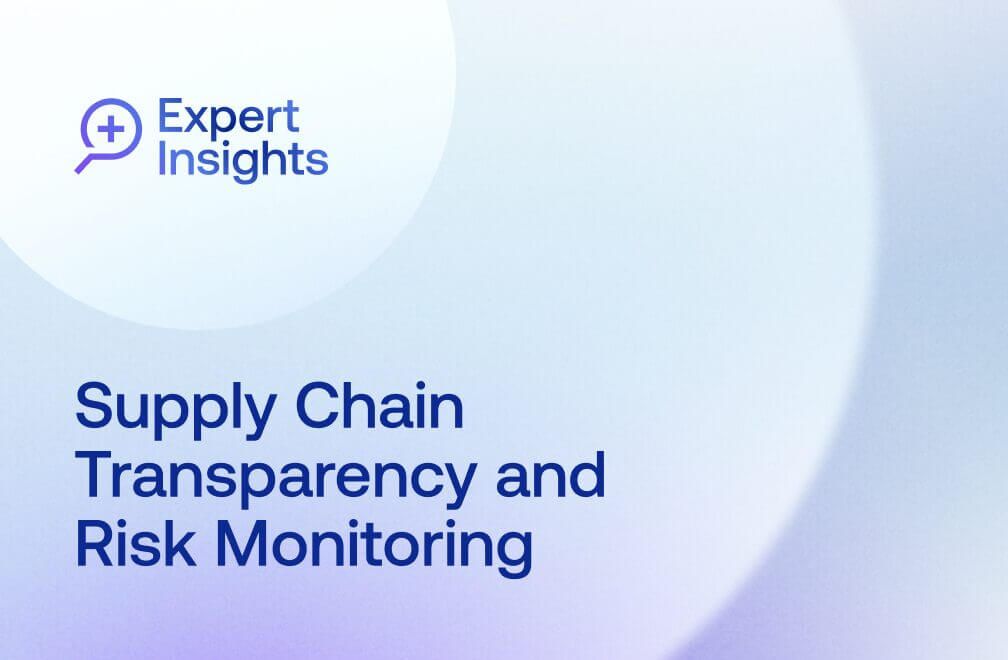
April 26, 2021 • 11 min read
How iRobot Empowers Internal Stakeholder Ownership with AuditBoard
In our Spotlight on Success series, Brian Wueste, Director of Internal Audit at iRobot, and members of his team share how AuditBoard’s intuitive SOX, internal audit, and risk management solutions helped iRobot create a strong culture of compliance by giving internal stakeholders the visibility they needed to truly own their controls.
Tell us a bit about iRobot and how AuditBoard recently helped your team manage a dynamic risk environment?
“iRobot is a leading global consumer robotics company based just outside of Boston. We are best known for our Roomba robot, and we also make robotic mops. Ever since the pandemic started our product demand has gone up from people working from home. Over the last year we’ve been obviously impacted by COVID. Our team has worked from home which has really forced us to rely on technology like Zoom and AuditBoard to make sure we stay connected and keep our work going.” – Brian Wueste, Director of Internal Audit at iRobot
“Over the past year, our company’s risks have changed so much and so fast that we’ve been asked to help facilitate more frequent risk assessments and more frequent risk touchpoints. With respect to risk management activities, we recently signed up for the risk module in AuditBoard. We are using that to facilitate our quarterly risk touchpoints — makes it super easy for us to reach out to every risk owner and get a quick update on their action plan. They can even reassess their risk and give an indication of whether the risk is increasing or decreasing in significance. Our team then can quickly summarize those risks, report up to the board and to leadership, and just keep risk top of mind for the enterprise and for the executive leadership team.” – Brian Wueste, Director of Internal Audit at iRobot
What challenges did you face before you implemented AuditBoard?
“Prior to AuditBoard, we used Microsoft SharePoint. We mainly used this tool as a repository for storing audit documentation… [because] there was no audit trail in SharePoint. For example, during our walkthroughs we’d have discussions with the business process owners where we would sit with them to update the control language — all of that was pretty much documented via email, and we’d also get the confirmation from the business process owner via email. There was no way to track any control changes via SharePoint. Once a control had been updated we would have to manually update the control matrix. We would also have to go into the test sheets and update those. And we would have to update the narratives as well as the issues or the summary of control deficiencies. There was no single source of the truth in SharePoint… Overall, I would say that it was a very inefficient process and tool prior to AuditBoard. We were really limited in SharePoint with the opportunities to assist the business with other areas outside of SOX and operational audit.” – Tanya Howe, Internal Audit Manager at iRobot
What are some of the key benefits you’ve seen with AuditBoard?
“When I interviewed at iRobot, I remember in my interviews talking about AuditBoard and how I want to bring the tool in — which is a scary thing to do during the interview, but I was so confident that it would add value and I didn’t want to go back to Excel and SharePoint… The three things that I looked for were — first: efficiency. We wanted to improve our own efficiency. We wanted to get better at testing, better at reporting, and not have to spend so much time manually gathering everything. That’s a no-brainer. The second thing is visibility. Our control owners couldn’t see the controls. Even in just two months at iRobot, it was mind boggling how many requests my team would get saying, “what’s my control, where’s my control?” We’d have to rifle through Excel files and find the right file to send them — that’s crazy. I knew with AuditBoard, we could give control owners visibility into their controls, which sounds simple, but that went a huge way to letting people see what their controls were. That leads into the third thing, which is accountability. We needed to make sure that the control owners knew these were their controls, not internal audit’s. That was a big change. Previously at iRobot, they viewed the internal audit team as owning the controls, and that’s a big no-no. Once they had visibility, these were now their controls. We quickly got WorkStream up and running with quarterly certifications, and control owners then can change the control or at least propose a change, further helping them with that element of accountability and ownership.” – Brian Wueste, Director of Internal Audit at iRobot
“Once we implemented AuditBoard, it felt like a breath of fresh air. It was a very easy self-service tool to use — very easy for us to update one control and have that reflected through each of the screens. It was also easy for the business process owners — we received very good feedback from them, as well as the external auditors. It definitely created more efficiencies for our team and more visibility for the business process owners and the external auditors.” – Tanya Howe, Internal Audit Manager at iRobot
“Now in AuditBoard, we can aggregate issues from SOXHUB and OpsAudit together. That’s been a big help to us because we pull together monthly reports for leadership and for the board. Having all the issues in one spot makes it really quick to update a PowerPoint to show the different slices and where we need to make sure remediation actions happen.” – Brian Wueste, Director of Internal Audit at iRobot
How has AuditBoard helped internal stakeholders take ownership of their controls?
“One of the ways that AuditBoard really helped our team and the process is literally by empowering the control owners. We use WorkStream for quarterly 302 and 404 certifications. The very fact that control owners could go in and recommend changes to the controls — be it central description, frequency, or even making it more collaborative — they had more insights as to what the deadlines were and what is required from them. It’s not just that they had access to the controls, but if something is due, they know when they need to go into AuditBoard and what they need to do — it gave them a better understanding of the whole process.” – Kranti Parvate, Senior Auditor with iRobot
“If you’re looking at a tool, especially like AuditBoard, it’s a no brainer that it’s going to benefit your audit team. You’ll become more efficient and it’ll definitely be better than Excel. But what you should really think about is how it will benefit your control owners. I think that the module that we get the most benefit from is WorkStream. Connecting directly with control owners, making controls visible to them, giving them a touch point every quarter and an easy way to respond to document requests and control certifications — AuditBoard just does that really, really well. It’s so fluid with control owners using single sign on. We get asked to use WorkStream in so many different ways — it really is a standout part of AuditBoard. I don’t think it gets as much hype as some of the other modules, but it’s been a difference maker for me at two companies now, being able to use WorkStream to really drive positive change of the business.” – Brian Wueste, Director of Internal Audit at iRobot
How has AuditBoard made it easier to onboard new team members?
“Having AuditBoard definitely has made it easier to onboard any intern or new staff coming in, especially while we’re working remotely. If any controls are to be assigned to the new person as a tester, all the prior year work papers can be found right in that control itself. They don’t have to try and figure out how to search for prior documentation.” – Kranti Parvate, Senior Auditor with iRobot.
“We’ve actually onboarded quite a few contractors and our experience has been that once we show them AuditBoard, they just take it from there — we’ve barely had to work on any training. They can see last year’s prior work and things like that, and they quickly pick up on how AuditBoard works, how to sign off, which requires less supervision from us.” – Thomas Perez, Senior Internal Auditor at iRobot
How have you leveraged AuditBoard to streamline how you work with your external auditors?
“One big benefit we’re seeing after implementation is with our external auditors. Before I got here, internal audit was kind of seen as a bottleneck because our process was so manual and we had so many files. We were slowing the process down for the external auditors at their busiest time — that’s not good. After AuditBoard, we taught our external auditors how to get into the tool. It’s self-service, so they can get in, they can see the controls, they can see our testing. We actually had a line item on our budget with the auditors that had savings for internal audit efficiencies — that made me and our whole team look really good year over year. From AuditBoard and from teaching the auditors how to use it, we literally saw savings on our audit fees.” – Brian Wueste, Director of Internal Audit at iRobot
You may also like to read


How Snowflake Uses Continuous Monitoring to Proactively Identify Risk

How Gulf Coast Focused Their Audits on High-Risk Areas

How Uniper achieves greater audit transparency and impact

How Snowflake Uses Continuous Monitoring to Proactively Identify Risk

How Gulf Coast Focused Their Audits on High-Risk Areas
Discover why industry leaders choose AuditBoard
SCHEDULE A DEMO



